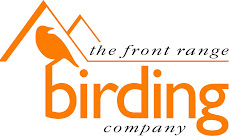This summer I have had numerous baby birds, Sparrows, Finches, Grackles, Starlings, Robins, and Flickers, all coming to my backyard to feed their new little fledglings. It's been such a joy to watch all the new babies getting fed. At first I thought the Grackles and Starlings had the loudest lot of babies, until the Flickers arrived with their new little ones. The Flicker babies make the most racket of them all. They are slightly smaller than the adults and have not guite got all their pretty markings and colors yet, but they sure can raise a ruckus. I can always tell when the Flicker babies are there. As of this posting, I am still getting Finch and Sparrow babies with their little pin feathers sticking up on their heads like little punk rock stars! They are so cute, mouths open wide and flapping their stubby little wings and making as much noise as possible so that the feeding parent will feed them first.
On another note, I finally am rid of most of the Grackles and Starlings. They were draining my hopper feeder on a dailey basis. This was getting rather expensive, so I switched to putting just safflower in the hopper and now all I have are just a few straglers here and there. The little song birds love the safflower and I'm not going broke feeding the birds.
Hungry momma bear & her cub
1 year ago









